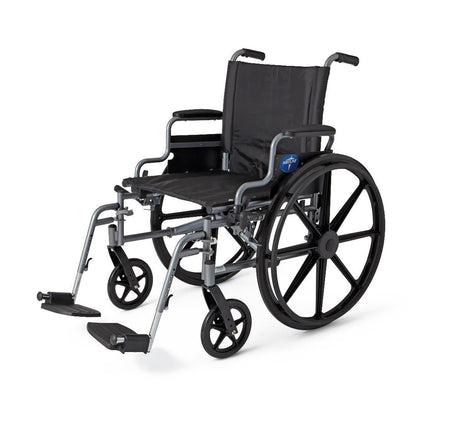Caring for someone with a disability often involves learning new skills, including how to safely move them from a bed to a wheelchair. This process can be daunting, but with the right knowledge and techniques, it becomes more manageable and safe for both the caregiver and the person being cared for. In this comprehensive guide, we’ll walk you through the steps and provide valuable tips and insights to ensure a smooth and safe transfer.
Why Safe Transfers Are Crucial
Transfers are a common part of daily life for many people with disabilities. However, improper techniques can lead to injuries for both the caregiver and the person being moved. Understanding the importance of safe transfers cannot be overstated. Research shows that using proper transfer techniques reduces the risk of injury and improves the overall quality of care.
Preparing for the Transfer
Before starting the transfer, make sure you have everything you need within reach. This includes the wheelchair, transfer belts, and any other assistive devices that may be required. Ensuring the environment is clutter-free and safe is also crucial.
Communication is Key
Always communicate with the person you are assisting. Explain each step of the process and ensure they are comfortable and ready before proceeding. This not only helps in making the transfer smoother but also builds trust between the caregiver and the person being cared for.
Using a Transfer Belt
A transfer belt can be an invaluable tool for safe transfers. Place the belt around the person’s waist, making sure it is snug but not too tight. This belt will give you a secure grip, making it easier to assist in the movement.

Positioning the Wheelchair
Place the wheelchair as close to the bed as possible, ensuring the wheels are locked and footrests are out of the way. Positioning the wheelchair correctly minimizes the distance and effort required for the transfer.
Assisting with Sitting Up
Start by helping the person sit up on the edge of the bed. You can do this by placing one arm under their shoulders and the other under their thighs, then gently swinging their legs over the side of the bed. Allow them a moment to regain their balance.
Using the Pivot Transfer Technique
The pivot transfer technique is effective for moving someone from bed to wheelchair. Here’s how:
- Stand close to the person with your feet shoulder-width apart for stability.
- Encourage the person to lean forward and place their hands on your shoulders.
- Grasp the transfer belt and gently pivot them towards the wheelchair.
Ensuring a Smooth Landing
Once the person is positioned correctly, slowly lower them into the wheelchair by bending your knees. Avoid using your back to lift, as this can cause injury. Keeping a steady and controlled motion is key to a safe landing.
Adjusting the Person in the Wheelchair
After the transfer, ensure the person is comfortably seated and properly aligned in the wheelchair. Adjust the footrests and armrests as needed. This final step is crucial for the person’s comfort and safety.
Common Mistakes to Avoid
Many common mistakes can compromise the safety of a transfer. Avoid these pitfalls:
- Not locking the wheelchair wheels.
- Rushing the transfer process.
- Improper use of transfer belts.
FAQs about Safe Transfers
Q: How often should I practice transfer techniques?
A: Regular practice is essential. Practicing at least once a week can help improve your skills and ensure safety.
Q: Are there any specific exercises to strengthen my back for transfers?
A: Yes, exercises like squats and core strengthening can be very beneficial. Consult a physical therapist for a tailored exercise plan.
Q: Can I use a sliding board for transfers?
A: Yes, a sliding board can be very helpful, especially for individuals with limited mobility. Ensure you receive proper training on its use.
Additional Resources
For more information and support, consider reaching out to local disability organizations or healthcare providers. They can offer tailored advice and resources to help you master safe transfers.
Conclusion
Mastering the art of transferring a disabled person from bed to wheelchair is an essential skill for caregivers. By following these steps and practicing regularly, you can ensure a safe and comfortable experience for everyone involved. Remember, patience, communication, and proper technique are the keys to success.
For personalized advice and support, consider booking a consultation with one of our expert caregivers. Together, we can make caregiving a safer and more rewarding experience.







